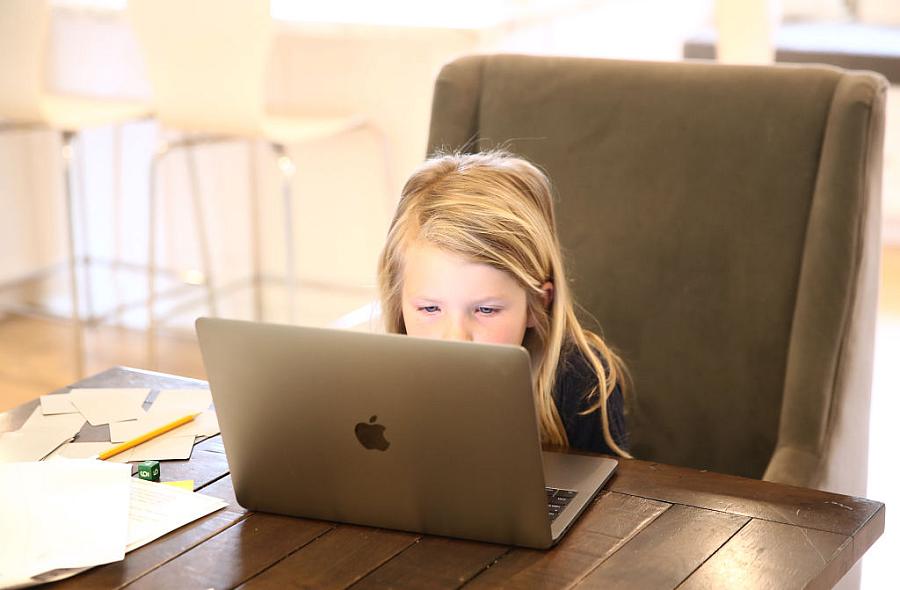COVID-19 is making children more sedentary — and that carries lifelong health risks

(Photo by Ezra Shaw/Getty Images)
Shlomit Radom-Aizik has a pretty good idea of how much exercise children and teenagers have been getting during the COVID-19 lockdown: precious little. Researchers in China found that children there were one-fifth as active during the pandemic as before. Similarly, in a survey by the Alaskan state health department, most parents said their children were exercising less and spending more time in front of screens.
“We are very worried for right now and the near future,” said Radom-Aizik, founder and executive director of the UC Irvine Pediatric Exercise and Genomics Research Center.
With the national trauma of a new disease that has killed more than 100,000 Americans within a few months, the havoc wrought on the economy, the stress of stay-at-home orders and remote learning, and racial anguish erupting in nationwide protests, low levels of exercise among children might seem like the least of our problems. But lack of physical activity carries serious immediate and long-term health risks, especially for low-income children and children of color.
Studies show that students’ stress levels will be higher without exercise, their ability to focus will be lower, and they are at greater risk of obesity. There’s evidence that regular exercise also boosts children’s immune systems.
Effects can be lifelong. A 2018 Swedish study of 1.2 million men found that those who had less muscle strength in their late teens were more likely to have physical disabilities 30 years later. Children and teens can build bone mass through exercise, which protects against osteoporosis later in life, Radom-Aizik said. After age 21 or so, bone mass can only be maintained with exercise, not increased.
The barriers to exercise are far more formidable for children of poverty. While families shelter in place, low-income families generally live in smaller spaces shared by more people, with little or no yard, making it difficult to play or get exercise. Their neighborhoods tend to have fewer parks. Parents are more likely to be employed in service jobs that require them to show up in person — and more likely to be laid off. Working parents may have less time to spend with their children. Jobless families may be more worried about how they’ll put food on the table than whether the children have gotten exercise that day.
Experts have been worried about the health of American children for years. The American Heart Association published a scientific statement in 2016 warning that children were too likely to be obese and have elevated blood pressure and blood sugar levels, in large part because of unhealthy eating and lack of exercise. And well before COVID-19, there were major disparities in physical activity between disadvantaged and middle-class children. When Radom-Aizik’s group studied fitness levels in Orange County, California, they found that in Santa Ana, a high-poverty city, at least 30% of fifth graders weren’t meeting the standard set for cardiovascular health and body composition. In adjacent middle-class Irvine, less than 5% of the children fell short of that standard.
With COVID-19, she believes, the gap has almost certainly grown. In California, Gov. Gavin Newsom canceled the state’s physical education requirements for the academic year. Many school districts are considering online compulsory summer school for students to catch up academically, and many families continue to shelter in place, so the lack of activity threatens to continue for months longer. Summer camps and local recreation activities have largely been canceled.
Then comes the uncertainty of a new school year. School could take place on campus, online, or a hybrid of the two. Even if the campus is operating, CDC guidelines mean that P.E. classes would have to change substantially. No longer could large groups of students play soccer or another sport, with a shared ball and physical contact. Radom-Aizik and her colleagues are brainstorming ways that schools can keep students socially distanced and active, and she is part of a UC Irvine task force advising schools in her area how to open safely.
“We can do physical activity in so many ways and not just the standard ways we used to do,” she said. “Even if the space is smaller. Even if we have less equipment.” Dancing, some martial arts and tai chi are just a few activities that can be done standing in one place; students can be taught to maintain safe distances during hikes or runs.
More people recognize the importance of exercise to mental and physical health, she said. The question is how quickly they’ll act on what they know so children and teens will get moving again. “We cannot put this on hold.”
